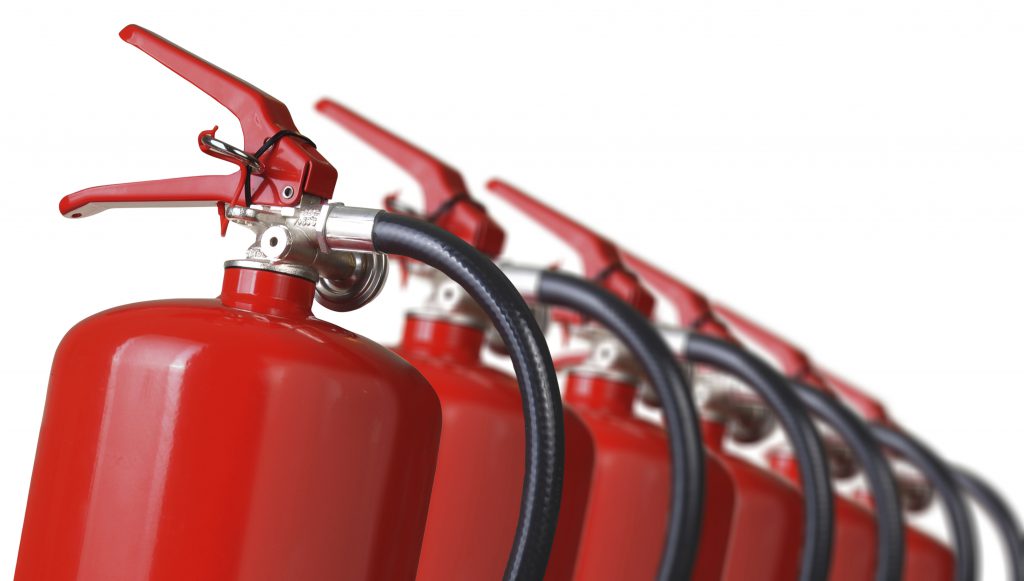Here at Protect & Detect, on our blog, we feel it is our duty to make sure you understand the various applications of the different types of fire extinguishers.
Just as important, though, we want you to understand the differences between the types of fires which they were constructed to fight.
However, in this article, we will be shining a light on foam fire extinguishers, ensuring that, by the end of this article, you understand how to identify a foam extinguisher, what fires they able to fight and how to properly operate one.

How to identify a foam extinguisher
Firstly, before you can use a foam extinguisher, you must be able to tell one apart from the others.
A foam extinguisher will have a red body with a cream band around the top of the tank.
Crucially, this is not to be confused with a water mist extinguisher – a relatively new variety which has a white band around the top of its tank.
Wet chemical extinguishers (yellow band) could potentially cause confusion, but it’s highly unlikely that you will find the two protecting the same area.
Which fires can a foam extinguisher fight?
Although they are not the most versatile type of fire extinguisher, they are prevalent primarily for their proficiency at fighting the following two types of fire:
- Class A – Fires which are caused by ordinary combustible materials. These include wood, paper, plastic, cloth and rubber.
- Class B – Fires which are caused by flammable liquids such as petrol, diesel and spirits. It’s worth noting, though, that Class B fires do not include those started by kitchen oils and fats; they require a separate extinguisher.
How a foam fire extinguisher works
As you can imagine, foam extinguishers fight class A and B fires by covering the offending area in a thick blanket of foam.
This, in turn, seals off any oxygen from reaching the fire whilst cooling the fuel source. Ultimately, these two functions guard against re-ignition, making foam extinguishers invaluable.
How to use a foam extinguisher
In order to use a foam extinguisher properly, it’s best not to opt for a ‘spray and pray’ approach. Instead, try and follow these steps:
- Before you use the foam extinguisher in question, you need to make sure that it is fully charged, and also that the safety pin through the grip isn’t bent.
- Remain a safe distance from the fire, and then remove the pin to activate the extinguisher.
- For fighting Class B, if possible, aim the nozzle at a vertical surface just off the fire. This is because aiming the jet directly at the fire may cause it to spread.
- For fighting Class A fires, aim the nozzle directly at the base of the fire, moving the jet from left to right accordingly.
Protect & Detect is a leading fire safety and security company, servicing Ipswich, Colchester, Cambridge, Bury St. Edmunds, Chelmsford and beyond.
Protect & Detect offers a wide range of fire safety and security services including; fire alarms, fire extinguishers, burglar alarms, intruder alarms, fire sprinkler systems, access control, door entry systems, CCTV, barriers, nurse and warden calls. Contact our friendly team today for a quick quote.

